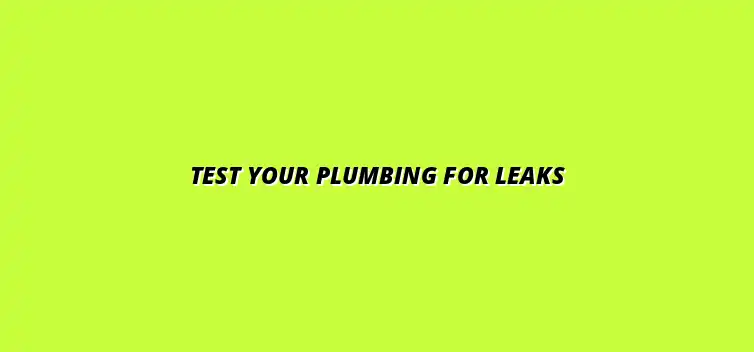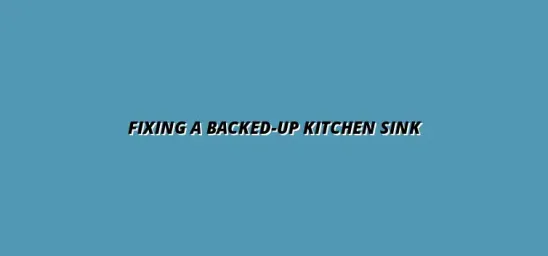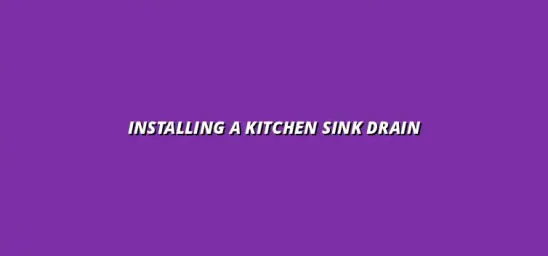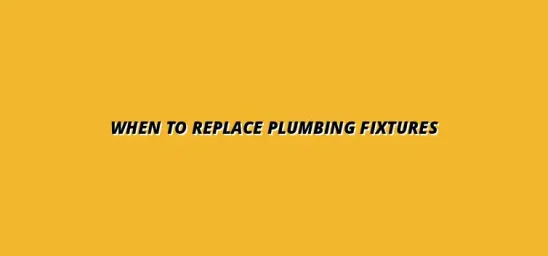
Test Your Plumbing for Leaks
Understanding the Importance of Leak Detection in Plumbing Systems
Leak detection is a crucial aspect of maintaining a plumbing system. It involves identifying and addressing leaks before they lead to significant damage or costly repairs. Understanding the importance of detecting leaks early can save homeowners from extensive water damage and high repair bills.
To put it simply, a plumbing leak is any unintended release of water from pipes, fixtures, or appliances. This can turn into a serious concern if left unchecked. That’s why knowing how to spot these leaks and the risks they pose is essential for all homeowners. For example, a seemingly minor drip from a faucet can quickly escalate into a significant problem if ignored. Learning how to unclog your sink with ease can also help prevent future leaks.
Defining Plumbing Leaks and Their Impact on Home Maintenance
What constitutes a plumbing leak?
A plumbing leak can occur in various forms, including dripping faucets, leaking toilets, or even hidden leaks in walls and floors. These leaks can be minor, like a slow drip, or more severe, such as a burst pipe. Recognizing these signs early can help in taking immediate action. Regular inspections, especially in areas like the kitchen, are key; learn more about regular inspections to prevent plumbing leaks.
Moreover, plumbing leaks can happen in both visible and hidden areas. So, it's essential to be vigilant and proactive in monitoring your home’s plumbing system. By understanding what a leak is, you can spot them before they become major issues. Hidden leaks, particularly in bathrooms, can be especially problematic; check out these tips on checking for hidden bathroom leaks.
The potential damage caused by undetected leaks
Undetected leaks can lead to serious damage to your home. For instance, they can result in water damage to walls, ceilings, and floors, which can be quite costly to repair. Additionally, mold growth can occur in areas affected by constant moisture, leading to health concerns and even more expenses.
Some potential damages include:
- Structural damage to your home
- Increased water bills due to wasted water
- Health risks from mold and mildew
Addressing leaks as soon as they are detected not only preserves your home's value but also enhances your overall comfort and safety. If you're dealing with sudden water pressure drops, addressing the issue quickly is vital; see our guide on fixing sudden water pressure drops.
Essential Tools and Materials for Testing Your Plumbing System
Testing your plumbing system for leaks requires the right tools and materials. Having these on hand can make the process much easier and more effective. Here’s a look at what you need to gather for effective leak testing.
Using the right equipment not only helps in identifying leaks but also ensures that you can address them quickly. Below are some essential items that every homeowner should consider having for leak detection. Regular maintenance, including preventing leaks in your water heater, is crucial; find helpful tips on preventing water heater leaks easily.
Gathering Equipment for Effective Leak Testing
Recommended tools for plumbing leak detection
There are several tools that can help you detect leaks in your plumbing system. Here are some of the most commonly recommended:
- Pipe Wrench: Useful for tightening or loosening fittings.
- Plumber's Tape: Helps seal connections to prevent leaks.
- Water Meter: Essential for monitoring water usage.
- Moisture Meter: Detects moisture levels in walls and floors.
These tools can help you quickly diagnose the presence of leaks and take appropriate action to fix them. Having them readily available can save you time and effort during inspections.
Materials you may need for a thorough inspection
In addition to tools, there are some materials that can aid in the inspection process. Consider gathering the following:
- Rags or Towels: To wipe up any excess water.
- Bucket: To collect water from leaks.
- Lubricant: For easing stubborn fittings.
- Flashlight: To illuminate dark areas during inspection.
These materials will help you conduct a thorough inspection, ensuring that no leaks are overlooked. By being prepared, you can tackle any plumbing concerns with confidence!
Frequently Asked Questions about Plumbing Leak Testing
Common Queries Related to Plumbing Leak Detection
How often should I check my plumbing system for leaks?
It's wise to check your plumbing system for leaks at least once a year. Regular inspections help catch leaks early before they turn into major issues. However, if you notice any signs of water damage or unusually high water bills, you should inspect your pipes immediately.
Additionally, consider checking your plumbing system after significant weather events, such as heavy rainfall or snowmelt. This can help ensure that your system remains intact and that no hidden leaks have formed due to shifting soil or pressure changes. If you're experiencing kitchen plumbing issues, such as a clogged sink, a plumber can help; check out fixing a clogged kitchen sink for more information.
- Inspect once a year for routine maintenance.
- Check after major weather events.
- Monitor for signs of damage or high bills frequently.
What should I do if I find a leak?
If you discover a leak, don’t panic! The first step is to turn off the water supply to prevent further damage. If the leak is significant, you might want to call a professional plumber right away. For situations requiring professional assistance, consider contacting a plumber in Great Barr, Birmingham or a similar local service.
For smaller leaks, you can often fix them yourself using plumbing tape or a sealant. However, always ensure that proper measures are taken to address the root cause of the leak to prevent future issues!
- Turn off the water supply immediately.
- Assess the severity of the leak.
- If necessary, contact a plumber for help.
- Consider DIY fixes for minor leaks.
Taking Further Action to Maintain Your Plumbing System
When to Seek Professional Help for Leak Detection
Identifying the right circumstances for hiring a plumber
There are specific situations that call for a professional plumber. If you have persistent leaks that you cannot locate, or if the leaks are in hard-to-reach areas, it’s best to seek help. Additionally, if you notice significant water damage in your walls or ceilings, don’t hesitate to call in an expert!
Another scenario is when your DIY fixes haven’t worked, and the leak persists. Avoiding professional help can sometimes lead to even bigger and more costly issues down the road.
- Persistent or unlocatable leaks.
- Water damage in walls or ceilings.
- Ineffective DIY repairs.
Understanding the costs associated with professional assessments
Hiring a professional plumber can come with varying costs, depending on the complexity of the job. Typical assessments may range from $100 to $300, but it can increase based on the extent of repairs needed. Always ask for an estimate before the work begins to avoid surprises!
It’s important to remember that while costs may seem high, investing in a professional inspection can save you a lot of money by preventing further damage. It’s better to pay for quality service than to face expensive repairs later!
- Typical assessment costs range from $100 to $300.
- Prices can increase with job complexity.
- Get estimates before work starts.
Implementing Regular Maintenance Practices
Establishing a routine plumbing inspection schedule
Creating a routine inspection schedule for your plumbing system is vital for maintaining its health. Consider setting reminders to check your system every six months, in addition to your annual check. This will help you catch potential issues early and avoid major disasters.
You could also create a checklist to make inspections easier. This way, you won’t miss any critical areas during your inspections, ensuring thoroughness!
- Set reminders for inspections every six months.
- Include an annual check as part of your routine.
- Create a checklist for thorough inspections.
Best practices for preventing future leaks
To minimize the risk of leaks, it's essential to follow some best practices. Regularly check your pipes, especially in high-risk areas like basements and under sinks. Additionally, ensure that your water pressure is at an appropriate level—too high can strain your plumbing and lead to leaks!
Lastly, consider installing leak detection devices in areas prone to water damage. These devices can alert you to leaks quickly, allowing for immediate action to prevent extensive damage.
- Regularly check pipes in high-risk areas.
- Monitor water pressure to avoid strains.
- Install leak detection devices for early warnings.
Summarizing Key Takeaways on Testing Your Plumbing System for Leaks
Recapping the Importance of Timely Leak Detection
Final thoughts on maintaining the integrity of your plumbing system
In conclusion, timely leak detection is crucial for maintaining a healthy plumbing system. Regular checks can prevent costly repairs and extensive damage to your home. Don’t underestimate the importance of being proactive in this area!
By developing a routine inspection schedule and staying aware of potential leak signs, you can save yourself time, money, and stress in the long run. Taking care of your plumbing system is an essential part of home maintenance!
- Timely detection prevents costly repairs.
- Develop a routine inspection schedule.
- Stay aware of potential leak signs.
Encouraging proactive measures for homeowners
I encourage all homeowners to take proactive measures regarding their plumbing systems. Simple actions, like monitoring your water bill and performing regular inspections, can make a big difference. Remember, a little maintenance can go a long way in protecting your home!
So, take charge of your plumbing system today! Your future self will thank you for addressing these issues now rather than later!
- Monitor your water bill for unusual spikes.
- Perform regular inspections to catch issues early.
- Act now to protect your home from potential damage.





Fixing a Backed-Up Kitchen Sink
Prepare Your Plumbing for Weather
Installing a Kitchen Sink Drain
When to Replace Plumbing Fixtures
Fixing a Jammed Garbage Disposal